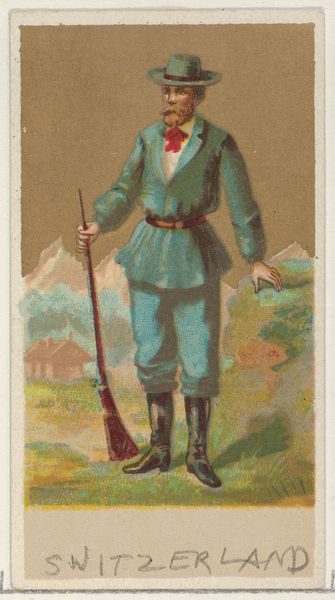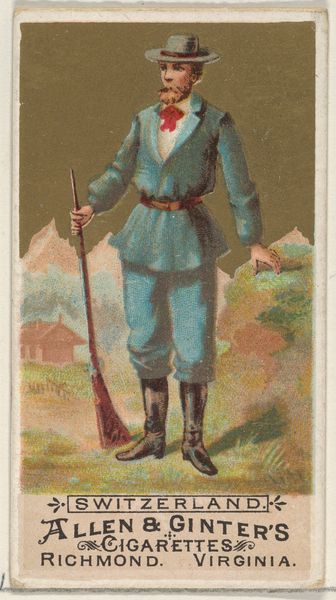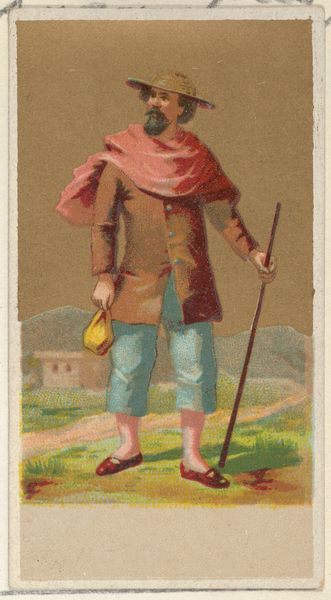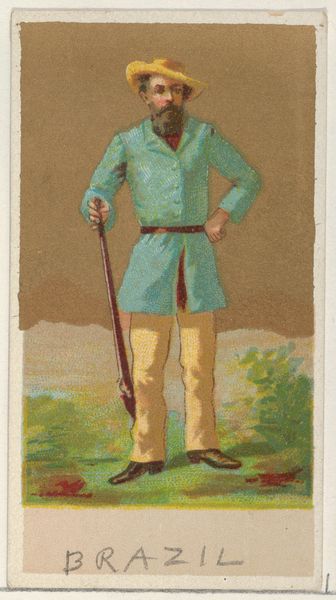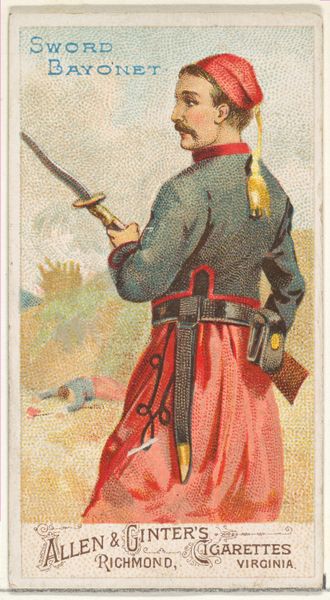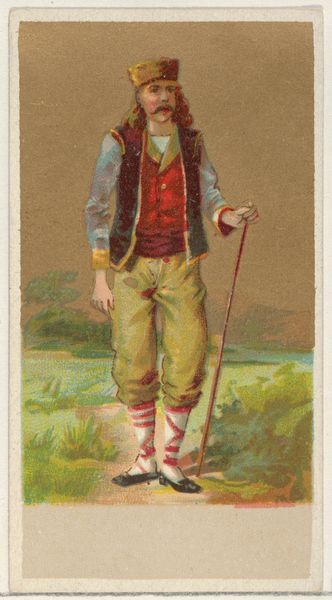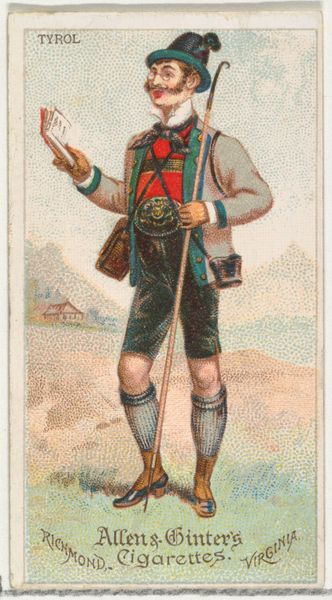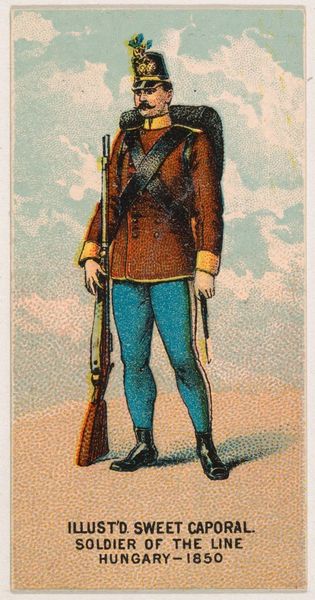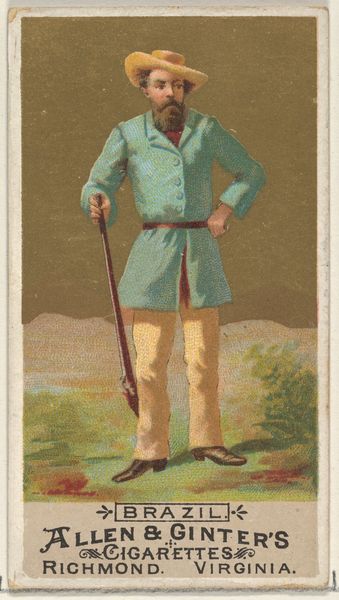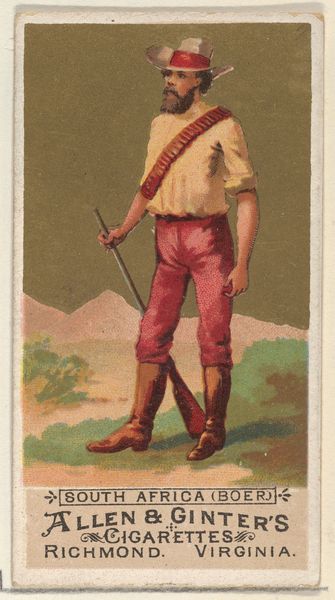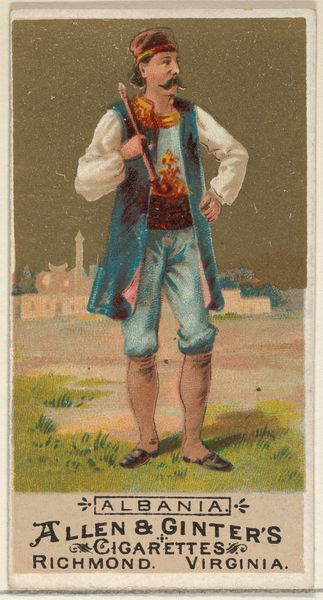
Canada, from the Natives in Costume series (N16) for Allen & Ginter Cigarettes Brands 1886
0:00
0:00
drawing, coloured-pencil, print
#
portrait
#
drawing
#
coloured-pencil
#
narrative-art
# print
#
coloured pencil
#
folk-art
#
orientalism
#
men
#
miniature
Dimensions: Sheet: 2 3/4 x 1 1/2 in. (7 x 3.8 cm)
Copyright: Public Domain
Editor: This is "Canada, from the Natives in Costume series," a colored pencil drawing from 1886, made for Allen & Ginter Cigarettes. It feels like a very idealized, miniature depiction of a Canadian man. What can you tell me about this work? Curator: Well, considering it was created as a cigarette card insert, we need to consider the context of mass production and distribution. These weren’t meant to be high art, but rather cheaply produced collectibles distributed to boost consumption of tobacco. The materials themselves - the card stock, the inks used for printing, the packaging of the cigarettes - all speak to a burgeoning consumer culture. How does the imagery itself tie into that? Editor: It’s interesting you mention the consumerism aspect. I see this romanticized image and I think about the exoticization and consumption of culture and identity through these small, easily collected cards. The image itself feels like it is part of the commodity. Curator: Precisely! Look at how the “Native” is portrayed. The attire, though labelled as ‘costume’, served a dual purpose: representing a culture, but also subtly promoting the exotic appeal to cigarette buyers. The company is using this person’s culture as a signifier to sell more product. Who actually made these cards and what was their labour situation like? These cards wouldn't have been made in a vacuum. They represent not just an image but the social and economic landscape of the time. What do you think about the way it obscures those factors? Editor: I never thought about that when consuming images like this. To look at the history of labor of such a trivial consumer good, it makes you wonder where the product comes from, what process has the material been put through. That adds an unexpected weight to something I assumed was just a harmless piece of promotional material. Curator: Exactly! It prompts us to consider the power dynamics embedded within the seemingly innocuous objects of everyday life. Materiality and labor intersect in unexpected ways. Editor: Thanks, I've definitely got a new perspective to appreciate the value of looking at art through production processes.
Comments
No comments
Be the first to comment and join the conversation on the ultimate creative platform.

